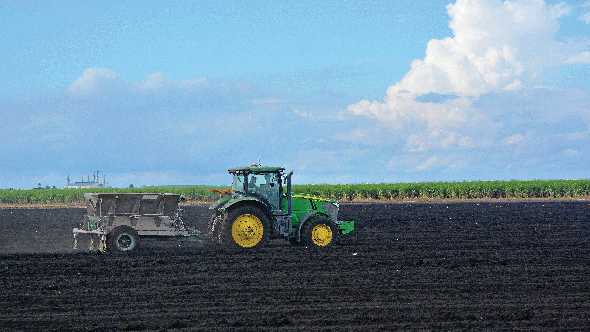BMPs Key to South Florida Water Quality Success
Introduced in 1992, the Everglades Best Management Practices (BMP) Program is a regulatory program, which requires that annual phosphorus (P) loads in Everglades Agricultural Area (EAA) basin run-off be reduced relative to “historic” loads. Beginning in 1995, EAA growers were expected to achieve this basin-level target through implementation of BMPs designed to reduce P discharges in farm drainage waters, as well as monitor drainage volume. Over the years, choices and designs of BMPs have evolved, but the general program remains the same: Namely, growers are to develop BMPs appropriate for their farming operation, and their final BMP permit — subject to approval by the South Florida Water Management District (SFWMD) — must include a combination of BMP strategies. Growers must bear the cost of instrumentation that collects monitoring data specific to their drainage watershed, such as daily rainfall, drainage flow, and drainage water P concentration. The monitoring data is submitted annually to the SFWMD for review (Rice et al. 2013).

Today, growers are banding fertilizer to reduce nutrient loads and using GPS guidance for precision farming.
Photo by Frank Giles
The UF/IFAS Everglades Research and Education Center (EREC) in Belle Glade has a long history in providing essential research and Extension activities in the area of BMPs to growers in the EAA (Daroub et al. 2011). BMPs seminars and workshops are conducted twice annually and have a goal of serving both as a refresher course for growers in the EAA and for educating growers on new techniques and research advances. These workshops are well attended with more than 120 participants in each workshop. In addition to the workshops, hands-on field day demonstrations also are provided to growers, so they can apply a similar treatment technology on their farms.
Record Of Success
Since 1995, BMP implementation has been mandatory for all EAA farms that discharge drainage water into SFWMD conveyance canals. By regulatory rule, the implementation of BMPs at the farm level is required to support annual basin-level P load reductions of at least 25% relative to historic (pre-BMP) loading trends. During the 20 years since the inception of this regulatory program, EAA basin P-load reductions have consistently exceeded those required by law (25%), averaging 55%.
The overall basin-level P load reduction for water year 2016 was 27% (SFER 2016). This successful program is a collaborative effort that involves 100% cooperation by EAA farmers, and ultimately has prevented over 3,000 metric tons of P from leaving the EAA and entering the Everglades Protection Area.
Some Common BMPs Implemented in the EAA:
- Soil testing: In order to avoid excess application of P to the fields, soil tests are conducted prior to planting. Fertilizer recommendations are then made based on the soil test results.
- Fertilizer application: Three fundamental goals of P fertilizer application BMPs are to fertilize to cover crop needs; reduce over-application or misapplication; and eliminate spills and clean-up spills. The rationale is to apply the least amount of P fertilizer required to produce optimum yields. This can be achieved by: increasing fertilizer use efficiency; right timing of fertilizer application that may involve split applications; placement of fertilizer close to the root zone; and proper fertilizer sources (i.e., whether to use soluble versus slow release options).
- Water management practices: This involves detaining water up to 1 inch on the field prior to pumping. More water retained on the fields means less is being pumped out, resulting in lower P loads. However, water detention on planted fields needs to be done with caution not to stress crops that may ultimately affect the yields. Type of crops grown in a drainage area can affect the amount of water that can be retained. For example, established sugarcane can withstand wet soils much better than vegetable crops.
- Particulate matter and sediment control: Implementation of weed booms, canal sediment removal, and reducing pumping rates as water levels drop in the canal are some of the ways in which the transport of particulate P can be limited from farm canals.
- Raised culverts: Culverts are installed at a height above the canal bottom. Culverts serve as barriers to the transport of heavier sediments. This can potentially reduce net P loads. Maintaining culverts requires removal of accumulated sediments during the regular canal/ditch cleaning program.
- Flooded fallow fields: Flooding fallow fields in the EAA is considered a BMP for many reasons. It reduces soil loss due to oxidation; eradicates most sugarcane soil insect pests; retains nutrients including P in the soil; and provides habitat for wading birds. Growing flooded rice is an alternative to flooded fallow fields. Acreage of flooded rice has gradually increased in the EAA during the summer time.
Samira H. Daroub, a Professor of soil and water science, Timothy A. Lang, a Research Associate of biological engineering, and Mabry McCray, an Associate Scientist of Agronomy, also contributed to this article.










